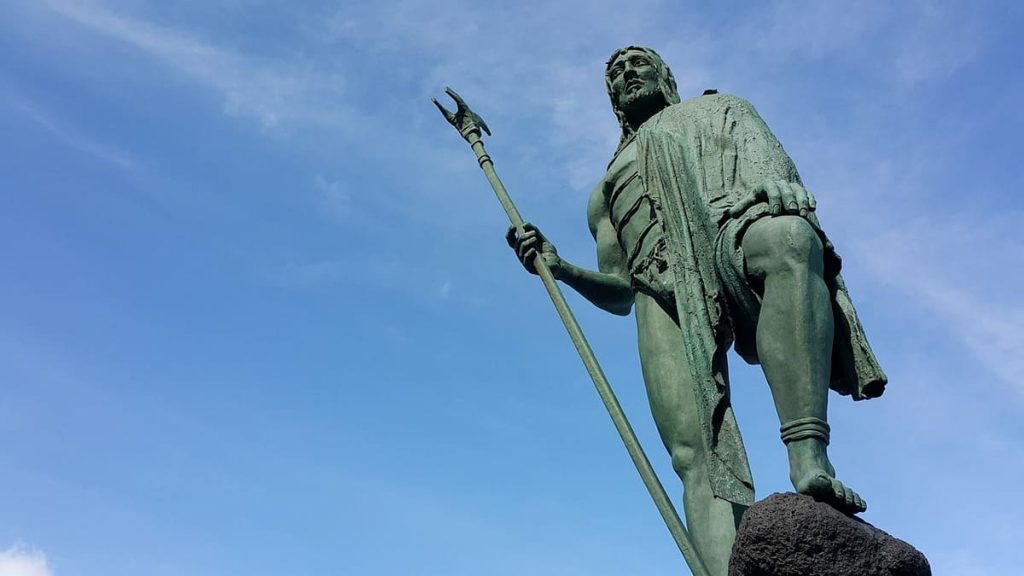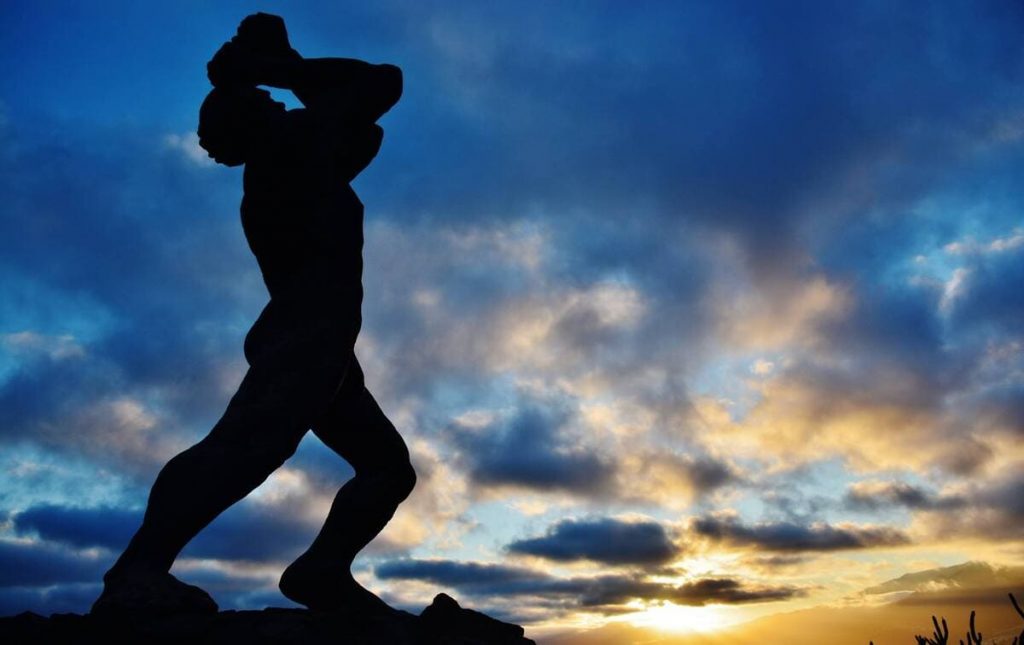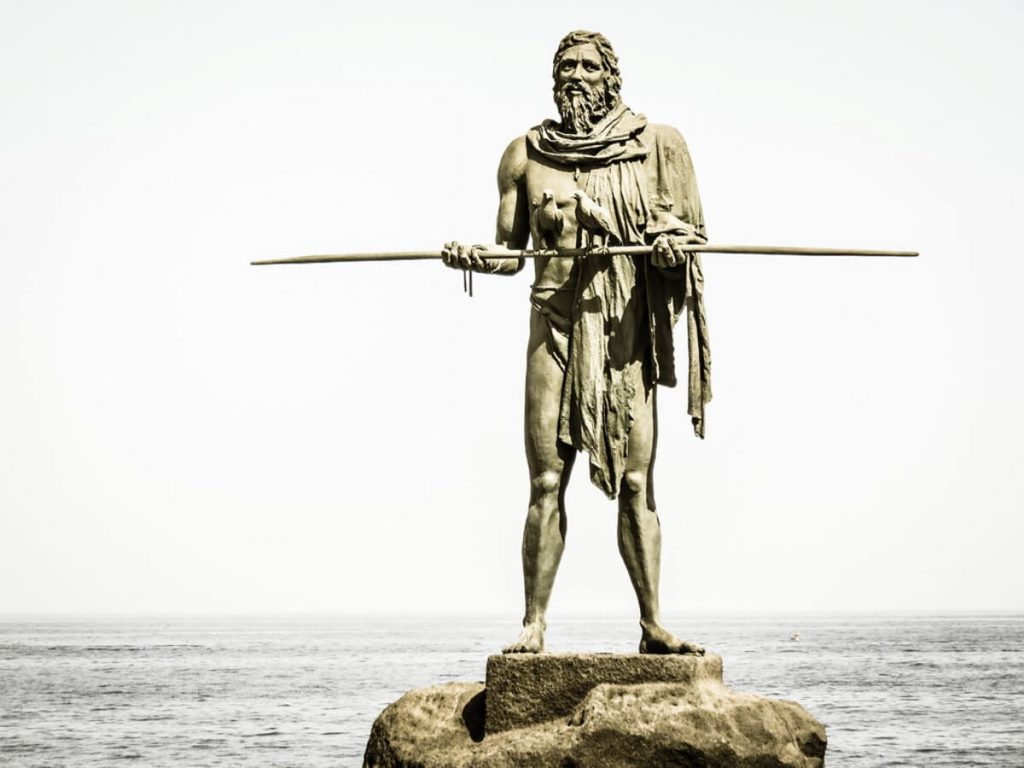Mencey was the term in the Guanche language used by the aborigines of Tenerife (Canary Islands) to designate the chief or king of a territorial demarcation or menceyato before the conquest of the island by the Crown of Castile in the 15th century. In this article we will talk about the menceys and the different menceyatos that existed on the island of Tenerife.
Origin of the term 'mencey'.
The first historians who included the aboriginal word mencey in their works translated the term simply as 'king'. Thus, the Dominican Fray Alonso de Espinosa indicates in several parts of his work that "the King was called Mencey" or "Mencey, who is king", while the engineer Leonardo Torriani says that the Guanches had "a king, whom they called Mencey", and Juan de Abréu Galindo also says that "the king was called Mencey".
The philologist and historian Ignacio Reyes proposes the most accurate meaning: 'principal, first', from a possible primitive form manza and by comparing the term with the Berber languages.
Characteristics of the menceys
The menceys were the highest authority in the hierarchical Guanche society, holding absolute civil, religious and military power. All the territory and its resources were the property of the mencey, who distributed them among the population in consideration of the social category and the services rendered.

The succession was fraternal, that is to say, when a mencey died, his brother inherited and so on until the end of the lateral line. At this point, the position reverted to the eldest son of the first brother. When the mencey was elected, he was sworn in before the tagororor, an assembly formed by the nobles and elders. During the ceremony the chosen one kissed the bone of the oldest of his lineage kept for this purpose and then, placing the bone on his head, he swore saying: "Agoñe yacoron yñatzakaña chacoñamet", which meant: 'I swear by the bone of that day in which you became great'.
The menceys maintained the purity of blood, marrying only with the island's high nobility, including marriages between siblings.
History of the menceys in Tenerife
The doctor and historian Juan Bethencourt Alfonso names in his work History of the Guanche people, a whole dynasty previous to the last absolute king of Tenerife, Tinerfe, nicknamed the Great, taken from the oral tradition of the island, although he himself warns that they are more legendary than real. For him, the oldest sovereign in memory was Archinife, who was overthrown by the noble Ucanca, who founded a new dynasty. After this, and descendant of this, came Binicherque, who married a princess of Gran Canaria.

Centuries later the warlike Chíndia appeared, who took power after defeating his uncles. When Chíndia died, the island was divided between his brother Armeñime and his son Vinque, who died at the same time in battle. Thus Betzenuriga was heir to the throne, although his uncles Taburco, Naga and Góymar were crowned for their provinces of Teno, Anaga and Güímar, respectively. Betzenuriga defeated his uncles, because according to Bethencourt Alfonso in 1347 was already sole king of Tenerife. He was succeeded by Titañe, who also disputed power with his uncles. His son, Sunta, defeated his father's brothers, who had established themselves as kings of their territories. Upon the death of Sunta, he was succeeded by his son Tinerfe, nicknamed the Great, after whose death his nine sons divided the island into nine kingdoms, known as menceyatos.
The nine sons of the only mencey
The nine sons of the last single mencey of the island were Acaymo, Atguaxoña, Atbitocazpe, Betzenuhya, Caconaimo, Chincanairo, Tegueste, Rumen and Beneharo. The descendants of these menceys were the ones who ruled the island at the time of the conquest, and their names were Añaterve, Adjoña, Pelinor, Bencomo, Romen, Pelicar, Tegueste, Acaimo and Beneharo.

Although the idea has become popular that the nine menceys of the conquest were direct children of the nine offspring of the last single mencey of the island, early historians indicated that they were descendants, not children. It is due to the historian José de Viera y Clavijo in the 18th century this conception about the Guanche dynasties.6
In 1502, years after the island was conquered, the menceyato of Adeje was reunified under the command of mencey Ichasagua.
The most relevant menceys and their menceyatos during the conquest.
Acaimo, menceyato of Tacoronte
During the conquest, Acaimo joined forces with Mencey Bencomo to repel the invasion, actively participating in the successive confrontations, some of which took place in his own territory, La Matanza de Acentejo.
Adjoña, menceyato of Abona
Around 1490, Adjoña signed peace agreements with the governor of Gran Canaria Pedro de Vera, ratifying the agreement with Alonso Fernández de Lugo in 1494 shortly after his first landing, thus making his menceyato a peace party during the conquest.
Añaterve, menceyato of Güímar
An important evangelizing mission had been carried out in his territory since the middle of the 15th century, and he was the first mencey to make peace with the Europeans, thus turning his territory into a peace zone.
Bencomo, menceyato of Taoro
He was the most powerful mencey of the island, being considered a "Primus inter pares". He was the leader of the Guanche warring factions. He died in combat in November 1495.
Beneharo, menceyato of Anaga
The mencey Beneharo made peace in 1492 with Lope de Salazar, who had been sent by the governor of Gran Canaria Francisco Maldonado. After a slave raid carried out shortly after against the Guanches of Anaga, the mencey withdrew his support to the Europeans, although after the landing of Alonso Fernandez de Lugo he renewed the peace with the Castilians.
Pelinor, menceyato of Adeje
As a mencey who actively supported the conquistadors, he was amply rewarded by Fernández de Lugo. He received several lands in repartimiento and according to genealogists he was granted a coat of arms.
Pelicar, menceyato of Icod
Pelicar joined the mencey Bencomo de Taoro to repel the Castilian invasion in 1494, and his menceyato was included in the war bands. However, some historians such as Viera y Clavijo indicate that Pelicar did not ally with Bencomo, because he distrusted the ambitions of the latter.
Romen, menceyato de Daute
The mencey Romen allied with Bencomo against the Castilian invasion, being his menceyato one of the warring sides. However, some historians allude that he refused to ally with Bencomo because he did not want to submit to the mencey of Taoro leading the rest in the war.
Tegueste II, menceyato de Tegueste
Tegueste allied with the mencey Bencomo to reject the invasion, participating actively in the successive confrontations. José Viera y Clavijo refers that, for the battle of Aguere, the mencey took with him about 1200 warriors.
Bentor, menceyato of Taoro
Bentor was the son and successor of Mencey Bencomo de Taoro, who was also in charge of leading the warring sides. He participated with his father in the confrontations that took place during the conquest of the island. After continuous defeats, Bentor and his Guanche supporters took refuge in the heights of the Tigaiga hillside, where the mencey decided to put an end to his life by throwing himself into the void.
The Canary Islands is a land with a thousand things to see, explore and learn about. If you are interested in knowing more interesting facts about Doramas, the aborigine of Gran Canaria, and the Canary Islands, its culture and traditions, we leave you below the link to the section Culture and traditions.
Photos: Canarias Noticias, Flickr



